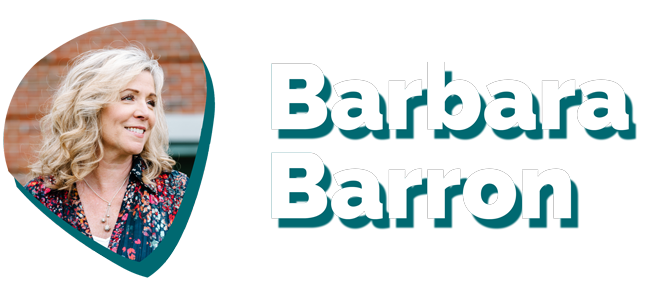by Barbara Barron | Posted August 16th, 2023 | Subscribe to this newsletter

A new school year. A new chance to get off on the right foot.
If you’re like me, after a needed refresh over the summer, you’re ready to take it on again — but maybe with some new thinking. A new set of practices to keep us productive and protect against burnout.
My summer was full of competing priorities. Both personal and professional. So I’ve been thinking a lot about how best to identify what really matters, what will have a real positive impact – especially with the people I care most about – and what I need to jettison, frankly.
That last one is tricky, right? But freeing.
Recently, I saw – for what must have been the 1,000th time – the four quadrants I have always associated with Stephen Covey’s 7 Habits of Highly Effective People. It turns out these quadrants are originally credited to Eisenhower. Known as the Eisenhower Matrix, the Time Management Matrix, and The Eisenhower Box, it’s the 4 boxes labeled: Important, Not Important, Urgent, Not Urgent.
Let’s see if this model might be useful to us to understand, organize, and prioritize some of the development activities we all manage. Let’s see if it can help us stay in better balance.
As a primer: for the purposes of this exercise, “important” means significant. “Important” things will likely have a positive impact, or maybe prevent something terrible from happening in our professional lives.
“Urgent” means serious, critical. It is something that we should or must deal with now(ish).
Too often, it’s the non-urgent and not important things that rule our days. The pointless email threads. The meetings with no purpose. The stuff we use to distract ourselves or rest our weary minds for a minute. And some of the latter is fine. But if we are craving a break, why not go find a colleague to check in on (more important) or take a short walk and get some fresh air?
Have you subscribed to this newsletter yet? It only takes a minute.
Nothing works every single time. But, for our purposes here, I challenge us to lift ourselves out of the “unimportant” and “not urgent” boxes for more of the day. And the way to do that is first to take some time to plot your regular activities into the four boxes so you can take a hard look at where you are spending your time.
Try filling in these 4 boxes with some of your most common tasks.
| Important – – – – | Urgent – – – – |
| Not Important – – – – | Not Urgent – – – – |
Now let’s think of some together: ideas to get your brain going.
- Planned Giving. This is an excellent example of “Important but Not Urgent.” Planned giving is always on the back burner. Every single day I hear school leaders lament their stagnant or non-existent planned giving programs. This, my friends, is totally worth your time. No, it won’t likely produce big results tomorrow. But if you build it, they will come. More about how to do that here.
- Checking in personally with top donors. Definitely “important” and maybe even “urgent.” They need to be at the top of your mental to-do list. When did you last give an update on a program they care about? Do it!
- Pestering young alums to make a $5 gift to the annual fund. “Not important” and “not urgent.” Ditch it.
- Crafting a highly personal appeal to a new family. “Important” and even “urgent.” Too often I see development officers waiting until the family has “settled in”. Why? Parents are never (ever) as excited, optimistic, and open as they are during the first 6 weeks of a new school year—before anything has gone wrong. If you’ve done a good job of letting them know what to expect when they join your school community, there’ll be no surprise. See how to do a better job of that here.
Inevitably, we all have tasks like development committee meetings and parents’ association meetings that may seem, on the surface, unimportant and totally not urgent. And ok, not urgent, until things go sideways and then we have a situation that is both urgent and important (and out of control).
Instead, let’s look at those meetings as opportunities to create a productive and worthwhile experience, for everyone!
Sometimes success is a reframe.
And I would be glossing over a vital point if I didn’t recognize that we are rarely totally free to set our priorities. At work, we have supervisors, colleagues, and donors. At home, we have partners, family, and friends. There can be good-willed differences of opinion or full-on clashes about what matters most. One person’s “important” may hardly register with another. And since they often carry a certain emotional vibe, urgent/non-urgent items can cause big conflict. I’m not suggesting this work is always easy or smooth but the act of identifying for ourselves into which box a particular action fits (and having a frank conversation about it with those who hold a different view), may help us use this approach to move towards more peace and productivity.
Whatever else is on your plate this coming year, looking at things through this familiar and yet still highly on-point lens may be helpful.
Excited to kick off the 2023-24 school year along with you!
Thank you for all you’re doing.

Barbara Barron
[email protected]
Share this post:

BARBARA BARRON is one of the most respected and highly sought-after independent advancement professionals in the country, having worked with dozens of schools in every corner of the United States.
She has raised over $20 million for schools where she served as the Director of Development. Barbara is a New York Times bestselling author, speaker, and presenter who currently advises dozens of schools in various capacities. She is considered a thought leader in the world of advancement, with her writing widely shared by professionals in development offices worldwide.
More Advancement Articles







